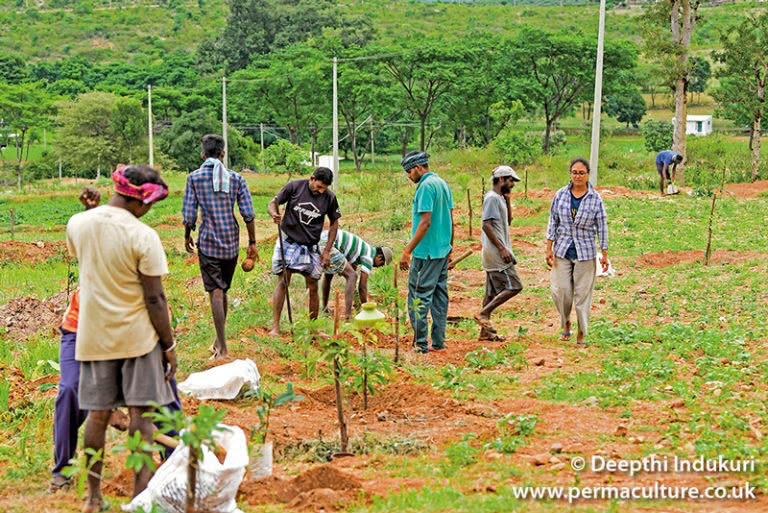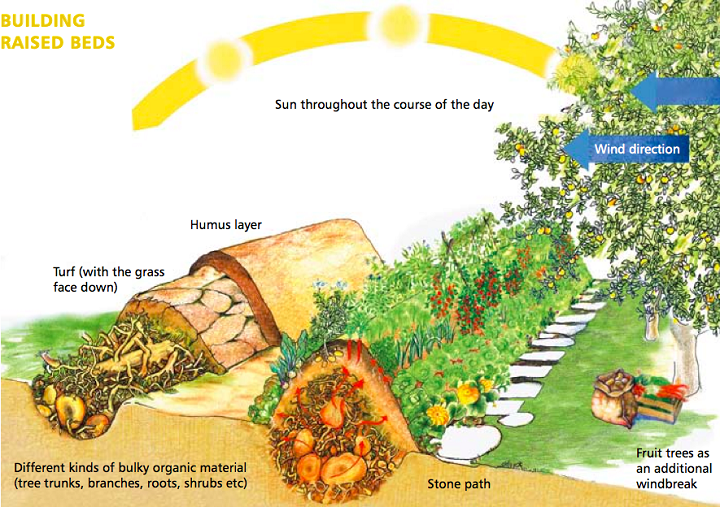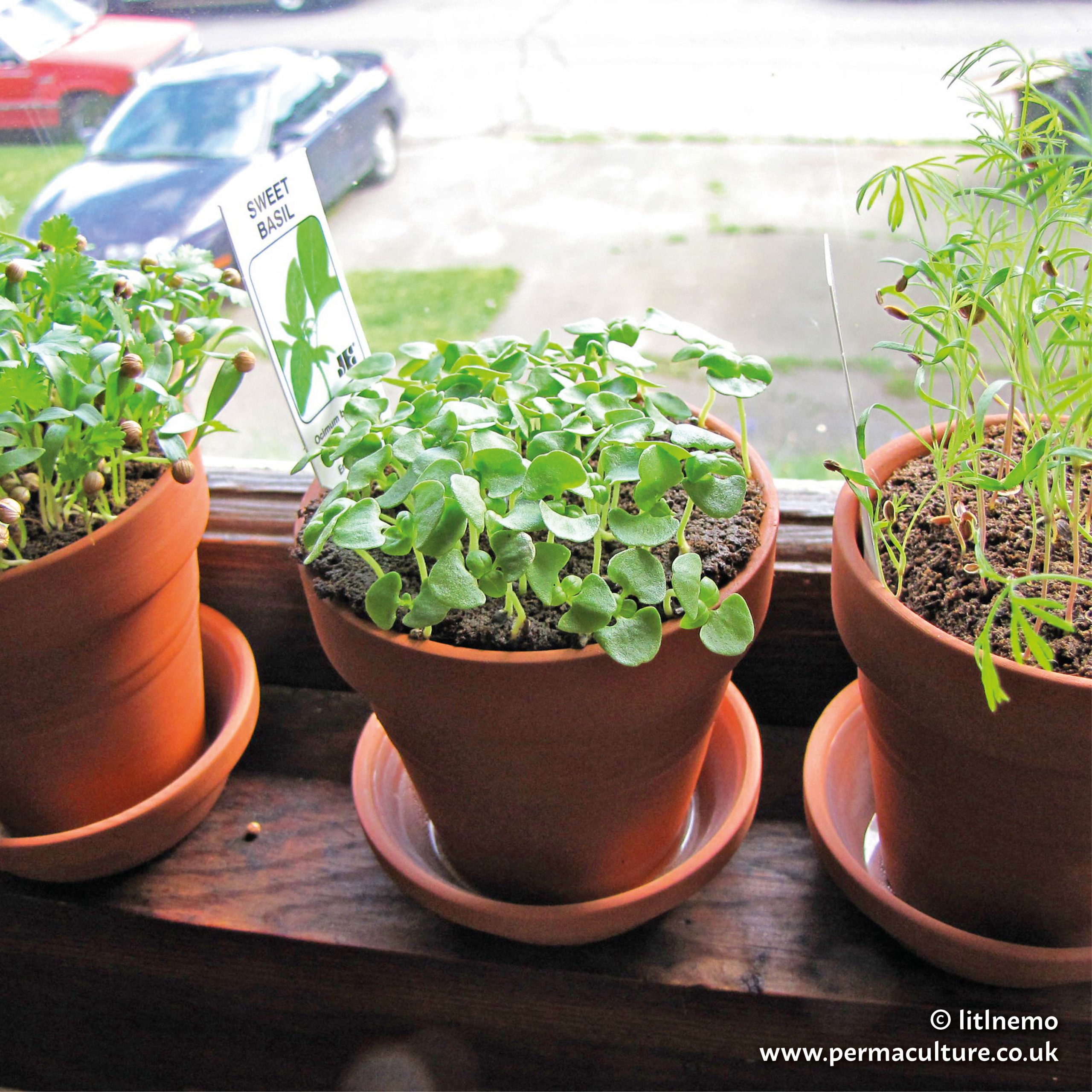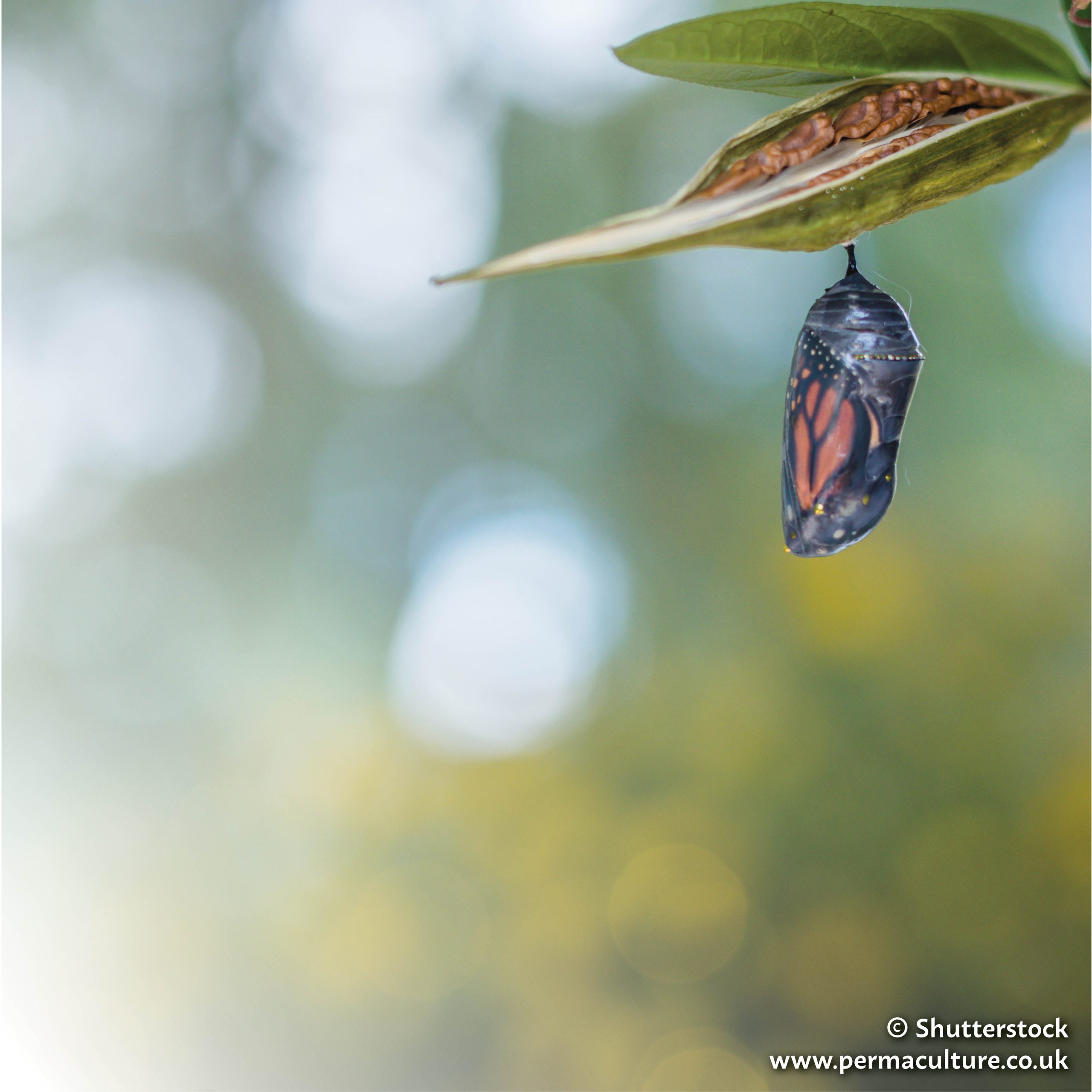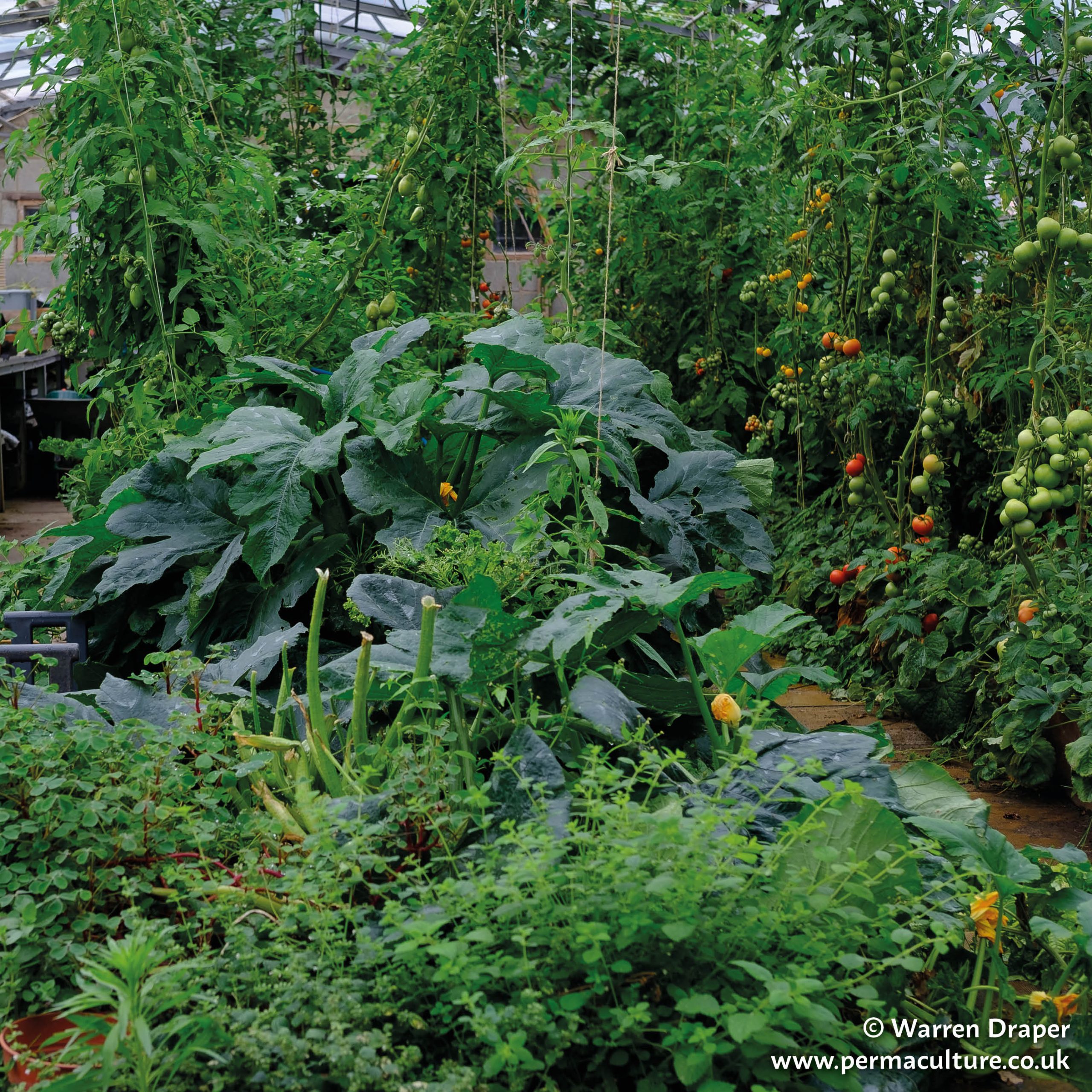In The Permaculture Garden Graham Bell has managed to write a book that is both a where-to-start guide for any new gardener and an introduction to permaculture for those who have been growing their own flowers, fruit and vegetables for years.
The first two chapters lead us to understand what we really want out of – and in – our gardens, and how to plan for the placement of those things with many permaculture principles (like using vertical space and creating edge).
On the premise that ‘early success encourages any gardener’, the book suggests eight immediately achievable projects, such as a tree garden around an existing tree, or a small grey water treatment reed bed. Each of these serves as an introduction to an aspect of permaculture gardening which is covered more fully later in the book.
Initial enthusiasm satisfied, the book then proceeds with chapters on Helpful Techniques, Earth Shaping, Adding Features, Water in the Garden, The Forest Garden, Community Gardening and finally Working with Soil, pulling together the overall aim of building selfmanaging systems.
There are 24 excellent species lists for temperate gardens – one for freshwater fish and the rest plants: useful climbers, winter salads, legumes, unusual roots, chicken fodder, animal fodder, insect repellent, insect attractant, dynamic accumulators and what they store for us, etc. The book could have done with a way of highlighting these in the index. (While I’m nit-picking, there’s a misspelling of mycorrhizae in the text, though not in the index, and having been referred to Living with Energy in the booklist, I couldn’t find it).
There is a clear and constant awareness of how people of all ages and abilities might want to use their gardens, and of how our actions at home can have a global effect. The whole book is also equally applicable to urban and rural settings, with some of the problems and solutions particular to cities getting special attention.
Above all this book is immensely practical. There are a few confusing moments but the user-friendly illustrations by Sarah Bunker are very helpful and humorous, and the text is full of reassurances. The Permaculture Garden looks simple. This is deceptive. In fact the density of information in both text and drawings is staggering for 170 pages and the result is inspiration to action. Graham Bell handles plants, words and other tools for sustainability with equal ease to ‘reveal a way in which ordinary people can do their bit to re-green the planet’.
